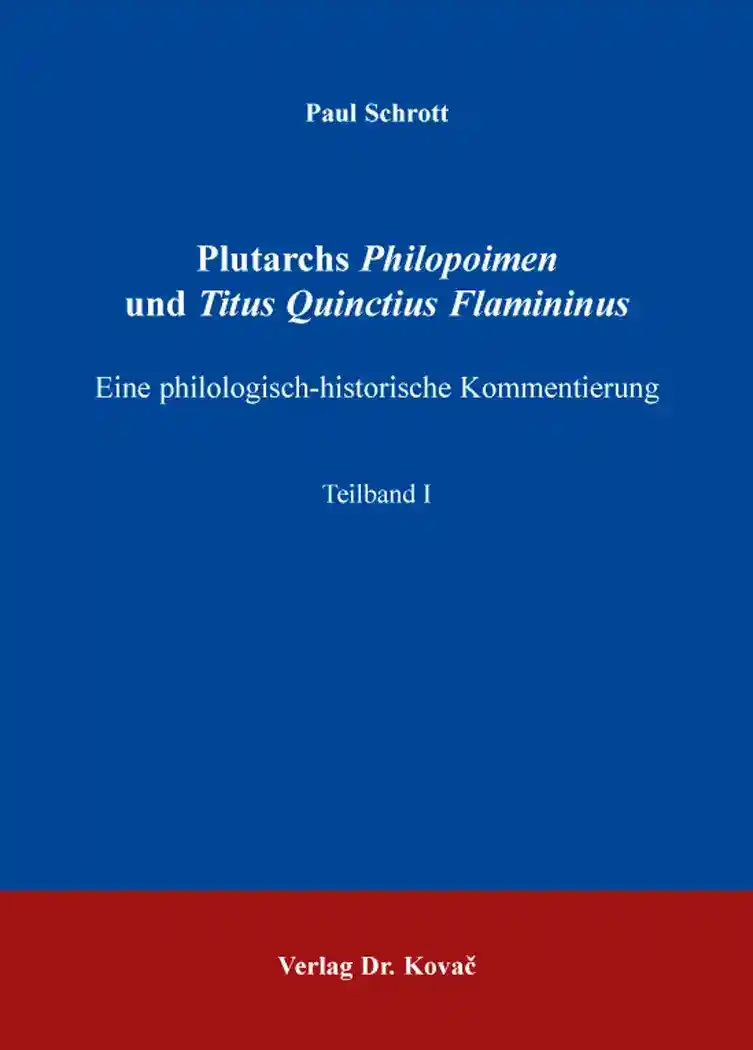Paul SchrottPlutarchs Philopoimen und Titus Quinctius Flamininus
Eine philologisch-historische Kommentierung
Zwei Teilbände
Schriftenreihe altsprachliche Forschungsergebnisse, volume 10
Hamburg 2014, 864 pages
ISBN 978-3-8300-8109-8 (print) |ISBN 978-3-339-08109-4 (eBook)
About this book deutschenglish
„We don’t write historical works, but lives.“ (Plut. Alex. 1, 2) With this statement Plutarchos of Chaironeia (about 45 – 120 AD) declared that he was writing biographical works. Undoubtedly Plutarchos’ Parallel lives mark the flowering of the ancient bios. Plutarchos always combines a Greek statesman with a Roman one in order to compare their lives and to teach his audience in ethical issues by using historical examples. Within the Parallel lives the combination of Philopoimen, the general of the Achaian League, and the Roman consul Titus Quinctius Flamininus proves to be the unique case that the described characters met each other in fact. The Greek and (at the same time) Roman citizen Plutarchos picks out the conquest (or liberation) of Greece by the Romans and its impact on his own times which have been shaped by the Roman sway as the central theme of this syzygy. Therefore this syzygy becomes an interface in Plutarchos’ oeuvre. Indeed it becomes clear that the biographer has modified the historical sources according to his own intentions. The Greek Philopoimen is described as a Roman, the philhellene Roman conqueror as a Greek. Both lives are (almost) completely parallelized. In order to create this effect, the biographer has also substituted the death of Hannibal for the missing end of Flamininus’ life. In this philological and historical commentary, Paul Schrott analyses Plutarchos’ intentions and methods by using the example of the syzygy Philopoimen – Flamininus. In particular, Plutarchos’ handling of historiographical sources, his pedagogic concept and his self-image as a biographer are pointed out. Especially the comparison with historical sources as Polybios and Livius leads to interesting historical and literary discoveries e.g. the critical analysis of Titus Quinctius Flamininus’ image as a philhellene, created by Plutarchos.Keywords
AchaierAchaiischer BundAitolesAitolischer BundAlte GeschichteAntiochos IIIBiographieFreiheitserklärungHellenismusKlassische PhilologieKorinthMakedonienPhilipp V. von MakedonienPhilopoemenPhilopoimenPlutarchRomTitus Quinctius FlamininusIhr Werk im Verlag Dr. Kovač

Möchten Sie Ihre wissenschaftliche Arbeit publizieren? Erfahren Sie mehr über unsere günstigen Konditionen und unseren Service für Autorinnen und Autoren.
